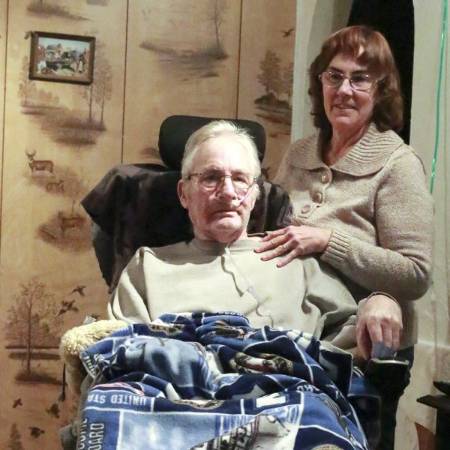Meeting Changing Needs

Cathy and Jerry Johnson walked a long and difficult road after Jerry received a diagnosis of multiple systems atrophy: a rare degenerative, neurological condition. MSA brought with it some medical challenges and rapidly-changing needs. Cathy works for the Utah Schools for the Deaf and Blind, and that connection made her one of the first in the Uintah Basin to hear of the local Assistive Technology Lab, which came to the Utah State University campus in Roosevelt last year. The lab is part of the Utah Assistive Technology Program at the Center for Persons with Disabilities. Cathy asked the lab for help, and that is how she met Cameron Cressall, the Roosevelt AT Lab Coordinator and made use of the lab’s Demonstration Library. “I wasn’t familiar with the diagnosis, so I did some research and tried to educate myself,” Cressall said. “Given the uniqueness of their situation, we tried to provide helpful solutions, whether it was a device that they could use or giving them a contact with a vendor who could give them the help that they needed.” The Demonstration Library at the AT Lab is available for people who want to see how assistive technology is used. (AT is any device, high- or low-tech, that allows people with disabilities to improve or maintain independence.) The library and lab are part of the Center for Persons with Disabilities’ Utah Assistive Technology Program. Its purpose is to give the families of people with disabilities a better idea of what devices are available on the market. It also has items available on loan, so clients can try them out and determine if a device is a good fit. Together, the Johnsons and the AT Lab worked to find equipment that would help them adjust to the effects of MSA, including adapted eating utensils and communication boards to help him express his needs when speech was difficult. Cressall and Clay Christensen, who coordinates the Logan AT Lab, provided grab-bar options that made the bathroom safer. The family used the space they had and meet Jerry’s needs for a time. It was also valuable to the family when an item from the demonstration library did not work. They tried out a Hoyer lift—a piece of equipment used to help move people with very low mobility from a chair or bed. It can cost thousands, but the Johnsons—and the professionals working with them—thought it would help. “I was looking to purchase one,” Cathy said. “I believed it was our best option.” But Jerry’s decline was so rapid at that point, it ended up not working out. Because they were able to try the equipment before the purchase, they did not go through that expense. “Ideally, people will find the right solution on the first try,” said Cressall. “But until people actually use a device or see it in use, I think it’s more challenging to know what they need or what’s going to work for them. The demo library gives them quicker access to the things they need, and if an item doesn’t work, at least they know that before they buy it from a vendor, or order it off the internet and wait for it to ship.” Jerry passed away earlier this year. The support from UATP made those last months easier, Cathy said. “I’m just so grateful to have them out here and have them available.” For a look at items available at the demonstration libraries in Logan and Roosevelt, visit the Utah Assistive Technology Program’s blog.

